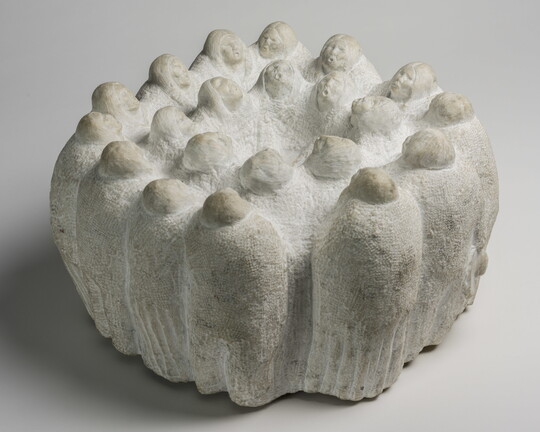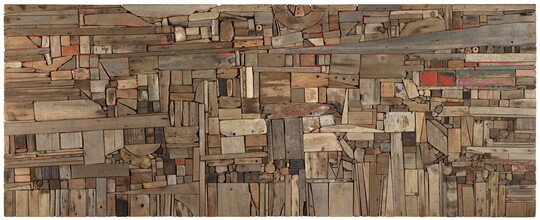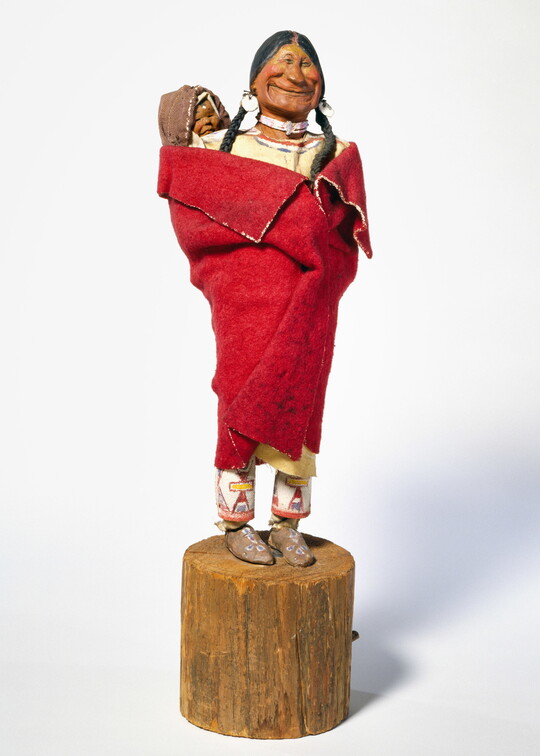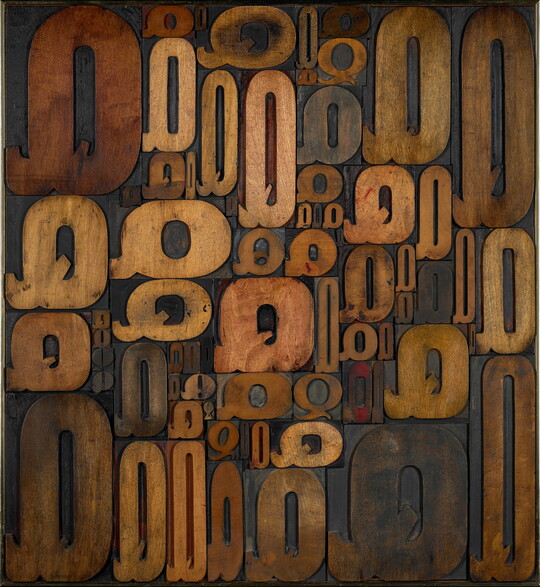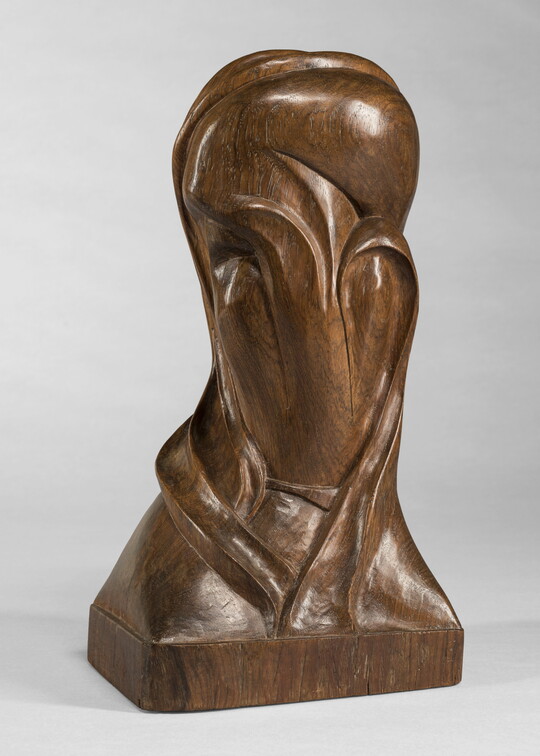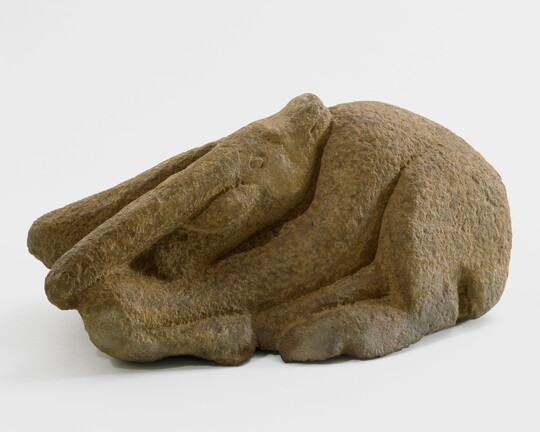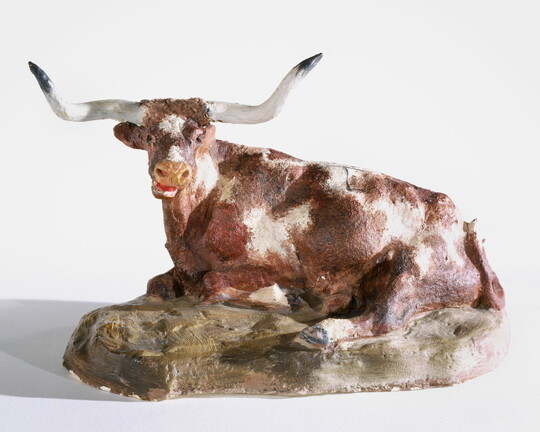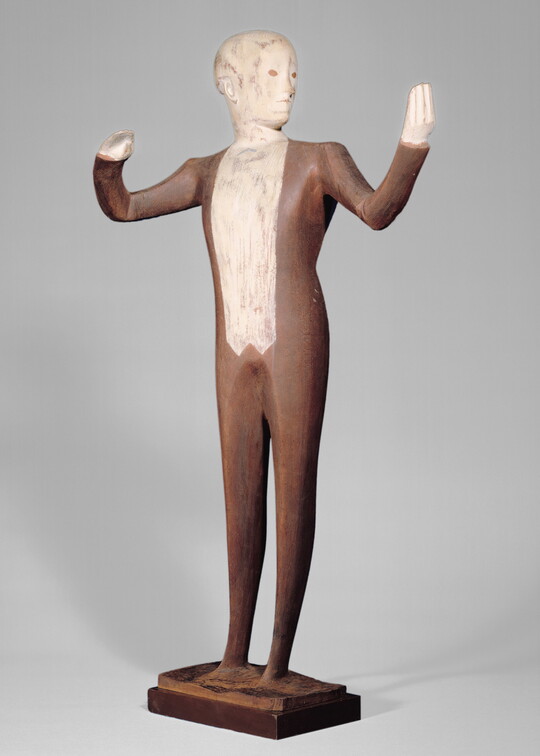





Artwork Images
Photo:
Controls
Plant Form
Object Details
-
Date
ca. 1924-1928
-
Object Type
Sculptures
-
Medium
Stained fruitwood
-
Object Format
carving
-
Dimensions
32 x 5 3/4 x 5 3/4 in.
-
Inscriptions
[None]
-
Credit Line
Amon Carter Museum of American Art, Fort Worth, Texas
-
Accession Number
1989.1
-
Copyright
Status undetermined
Additional details
Location: On view
See more by Robert Laurent
Tags
Video:
-
How might a work of art based on a natural object compare to a scientific drawing of the same subject?
Why might an artist choose to abstract a scene rather than to create a more representational, or realistic, depiction?
How do artists create a sense of movement, motion, or action in their artworks?
How might artists convey emotion in a sculpture?
-
What do you see?
What, if anything, does this remind you of? Look closely at the shapes, the colors, the different physical characteristics of the sculpture.
What kind of shapes are used here? (Organic shapes: associated with things from the natural world, such as plants and animals.) Is there an indication of movement, or is the form static?
How would you describe or identify the colors used? What emotions do they bring up for you?
Look at the material. What is the medium of the sculpture? This is made from fruitwood, which comes from a fruit tree. What do you think it was like to work with this material? How do you think Laurent created the organic shapes in this work?
How does this sculpture differ from an image of a plant you might see in your science textbook?
Why might Laurent have chosen to depict a plant-like form in this abstract way, rather than in a more lifelike style?
-
Grades Pre-K–3
Students will explore the outdoors to find a plant they find interesting or beautiful. Once the plant is selected, students will outline their plant. Students should keep their drawing simple, using only lines, no details. Students should then apply colors without worrying about details. Instead, they should think about the end result looking similar to what you would see whenever you squint.
Grades 4–12
Students will explore the outdoors to find a plant they find interesting or beautiful. Once the plant is selected, students will sketch a simplified version of the plant that will then be used to inform the creation of a sculpture. The sketch should not include details, only organic shapes. Students will choose a material to make the sculpture out of (e.g.: clay, wood, metal). Students will use earth tones to add color to their sculpture.
Encourage older students to create a sculpture at least 12 inches in height.
Share Educator Resources
Amon Carter Disclaimer
This information is published from the Carter's collection database. Updates and additions based on research and imaging activities are ongoing. The images, titles, and inscriptions are products of their time and are presented here as documentation, not as a reflection of the Carter’s values. If you have corrections or additional information about this object please email us to help us improve our records.
Every effort has been made to accurately determine the rights status of works and their images. Please email us if you have further information on the rights status of a work contrary or in addition to the information in our records.
Related Works
-
"49", n.d.
Doug Hyde
Marble
1973.2
-
New England Landscape II, 1967
George Morrison
Wood
1968.273
-
[Indian woman and child], ca. 1910-1925
Charles M. Russell
Plaster, wood, oil paint, and cloth
1961.59
-
Untitled, ca. 1970
S. H. Goodrich
Wood
1970.68
-
Lunar Landscape, 1959-1960
Louise Nevelson
Painted wood
1999.3.A-J
-
Head (Abstraction), 1916
Robert Laurent
Mahogany
1989.7
-
Goat, 1930-1931
John Bernard Flannagan
Granite
1982.37
-
The Texas Steer, ca. 1925
Charles M. Russell
Plaster, metal, and paint
1961.54
-
Chef d'Orchestre, ca. 1919
Elie Nadelman
Stained and gessoed cherrywood
1988.33





